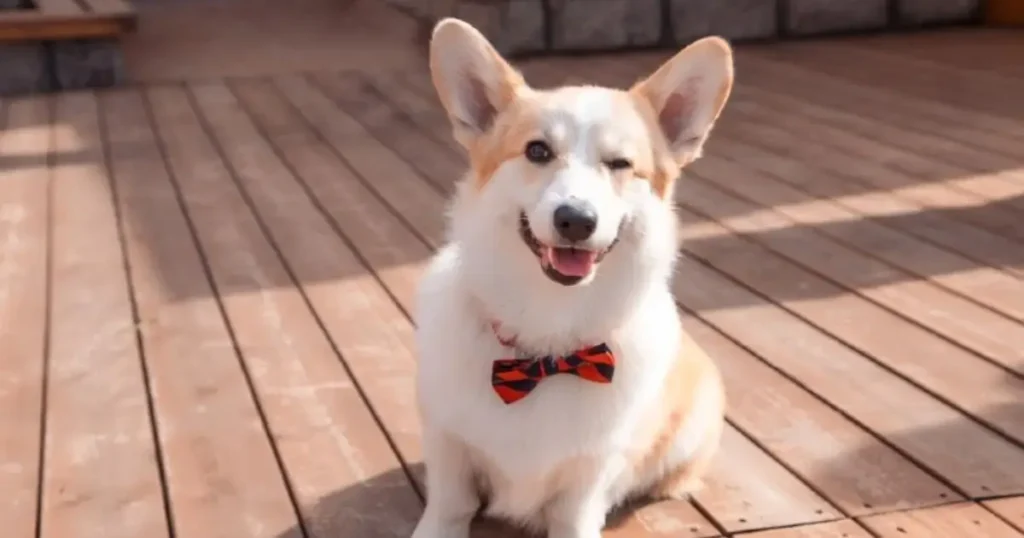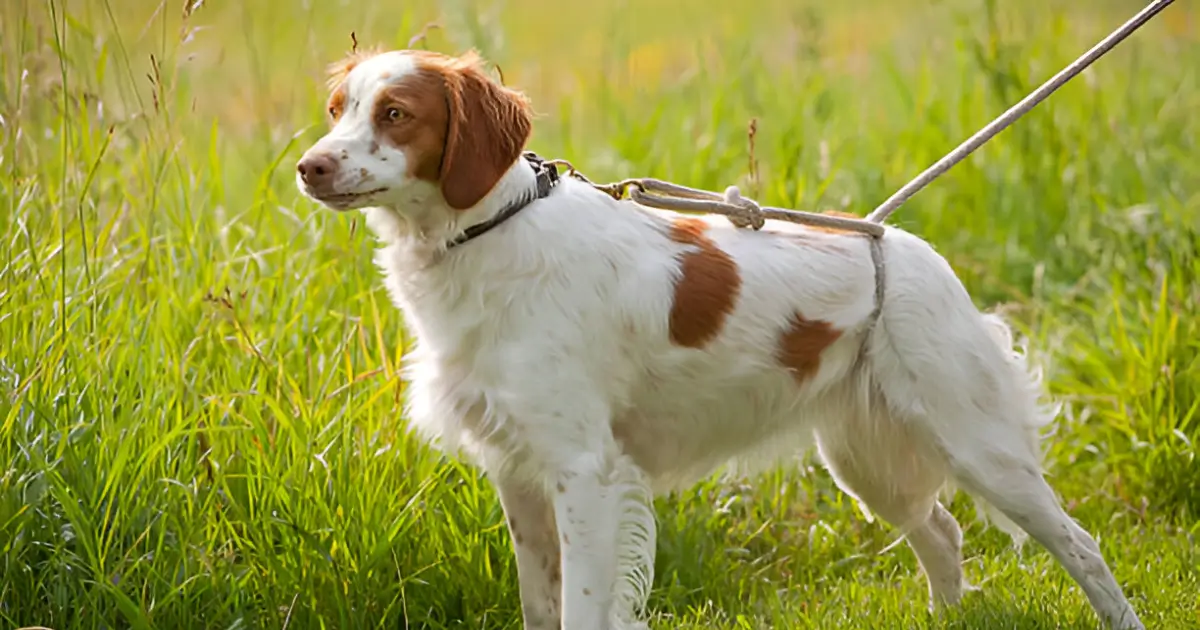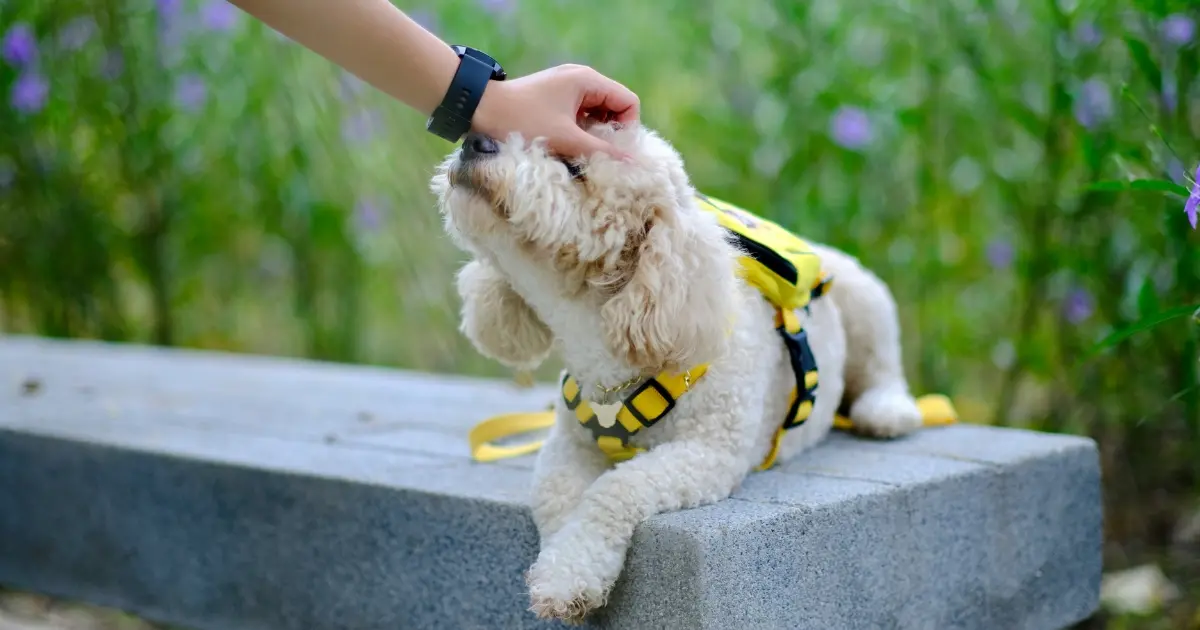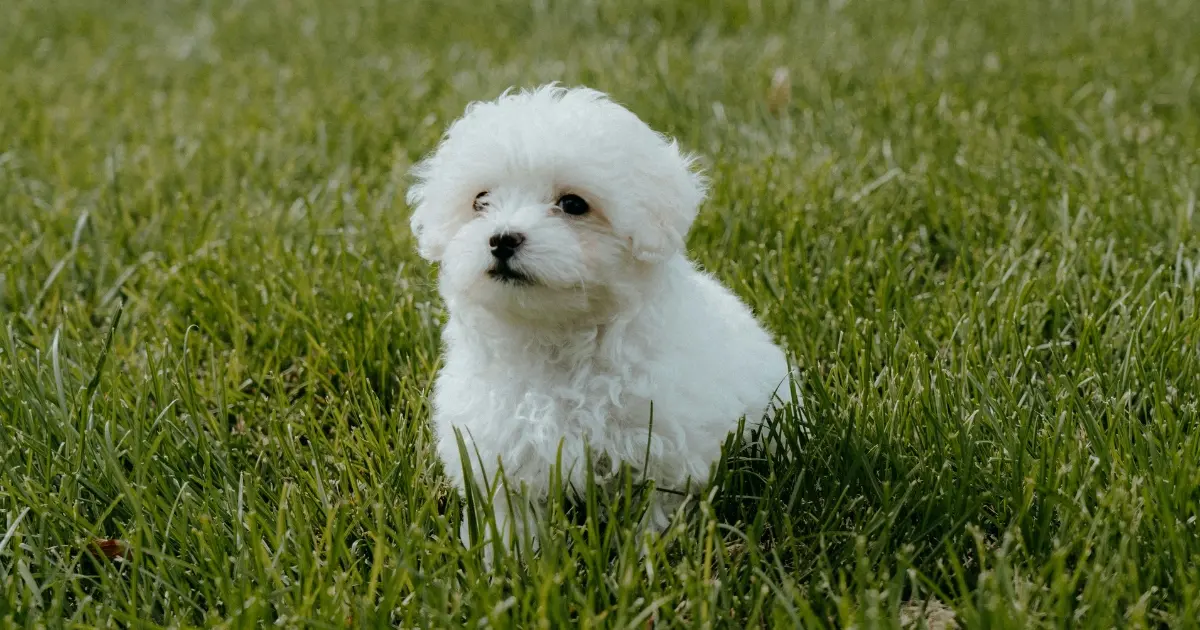Ever caught your furry friend giving you a cheeky wink? Dog winking is more than just a cute gesture. It offers a peek into their communication and emotions, puzzling many pet owners.
When dogs wink, they’re not just copying humans. Scientists say it’s tied to their social interactions. It can mean playfulness or submission, showing a complex language of non-verbal cues.
To understand a dog’s wink, look at the context, body language, and their personality. Some winks might be accidental, while others are a way to talk to us.
In this article, we’ll dive into the world of dog winking. We’ll explore the scientific, behavioral, and emotional sides of this charming behavior. Get ready to be amazed by the meaning behind a simple wink!
Table of Contents
Understanding Dog Body Language and Communication
Dogs are experts at talking without words. Their body language tells us a lot about how they feel and what they want. It’s more than just wagging their tails or barking.
Dogs send out complex signals to share their feelings. Their faces are especially good at showing what’s going on inside.
How Dogs Use Facial Expressions
Dogs’ faces are full of meaning. They communicate through:
- Ear positioning
- Eyebrow movements
- Mouth and lip tension
- Subtle muscle changes around eyes
The Importance of Eye Contact in Canine Communication
Dog eye contact is very important. Soft, relaxed eye contact shows trust and love. But, staring too long can mean they’re feeling challenged or upset.
“A dog’s eyes are windows to their emotional world” – Animal Behavior Experts
Reading Your Dog’s Emotional State
To understand your dog’s feelings, you need to watch closely. Look for:
- Relaxed facial muscles
- Ears in neutral position
- Soft, open mouth
- Gentle eye contact
By noticing these small signs, you can really get to know your dog’s feelings.
Why Do Dogs Wink? The Science Behind This Behavior

Dogs winking at you is more than just a cute face. Research shows it’s a complex way for dogs to talk to us. It’s a key part of their communication with humans.
To understand why dogs wink, we need to look at a few scientific views:
- Neurological signaling that controls facial muscles
- Evolutionary communication strategies
- Social bonding mechanisms
Dogs wink to show their feelings. Studies show that winking is something dogs learn from us. It’s a way for them to connect with us.
“Dogs have evolved remarkable communication skills that go beyond traditional animal behavior patterns.” – Dr. Sarah Thompson, Animal Behavior Specialist
The brain is key to dog winking. It controls the muscles in their face. This lets dogs send us messages like “I’m friendly” or “I’m feeling playful.”
Also, different dogs wink in their own way. This shows that both their genes and their environment play a part in this behavior.
The Difference Between Dog Winking and Blinking
Dogs talk to us in many ways, including with their eyes. Knowing the difference between blinking and winking can help us understand what they’re trying to say.
Natural Blinking vs. Intentional Winking
Dogs blink for reasons beyond just keeping their eyes moist. Unlike humans, who blink on purpose, dogs blink naturally. Winking, however, is a way dogs can show emotions.
- Natural dog blinking helps maintain eye moisture
- Intentional winking can be a social bonding gesture
- Frequency of dog blinking varies based on environmental factors
How Often Dogs Normally Blink
Dogs blink about 10-15 times a minute. This is less than humans. Things like dust or bright lights can change how often they blink. Stress and excitement can also affect their blinking.
Understanding Blepharospasm in Dogs
Blepharospasm is when a dog’s eyes twitch or close on their own. It’s not the same as blinking. If your dog’s eyes keep moving like this, it might be a sign of a health problem.
“Unusual eye movements in dogs can be a sign of communication or potential medical concerns.” – Veterinary Ophthalmology Research
It’s important to know the difference between normal blinking and health issues. Paying close attention to your dog’s eye behavior is key.
Social Bonding Through Eye Contact and Winking

The bond between dogs and humans is special and strong. Dogs have learned to communicate in ways that touch our hearts. They do this through simple yet powerful visual cues.
Eye contact is key in forming a bond between dogs and humans. Studies show that when dogs and humans look at each other, both feel a rush of oxytocin. This hormone is linked to feelings of love and trust.
“A single look can speak volumes in the language of social bonding in canines.”
Dogs use eye contact in many ways to connect with us. They:
- Build emotional connections
- Share their needs and feelings
- Look for guidance and comfort
- Show trust and love
Dogs are also great at reading our faces and emotions. They understand eye movements and winks in a way that deepens our connection.
When a dog looks at us with soft eyes, it means they feel safe and connected. Winking is a playful way for them to say they get us and feel close.
Medical Reasons Behind Dog Winking
Dog eye problems can be complex and concerning for pet owners. It’s important to understand the medical reasons behind unusual eye movements. This helps keep your dog healthy and happy.
Dogs may wink or show unusual eye behavior for many reasons. Spotting these signs early can stop serious eye problems from getting worse.
Common Eye Conditions in Dogs
- Conjunctivitis: An inflammation that causes redness and discharge
- Corneal ulcers that create discomfort and excessive blinking
- Dry eye syndrome affecting tear production
- Allergic reactions causing eye irritation
- Infections that impact eye health
When to Consult a Veterinarian
Veterinary care for dogs is key when you see:
- Persistent winking or blinking
- Unusual eye discharge
- Visible eye redness or swelling
- Changes in eye appearance
- Signs of pain or discomfort
“Early detection of eye problems can prevent serious complications and preserve your dog’s vision.” – Veterinary Eye Specialists
Prevention and Treatment Options
Preventive care is vital for dog eye problems. Regular vet visits, gentle eye cleaning, and a healthy diet can help a lot. These steps can lower the risk of eye issues.
Treatment might include eye drops, antibiotics, or surgery. Your vet will choose the best plan for your dog’s needs.
The Role of Breed-Specific Traits in Winking Behavior

Dog breed characteristics are key to understanding why some dogs wink more. Genetic factors shape breed-specific behaviors, like eye expressions and communication styles.
Different dog breeds have evolved unique facial structures. These can affect their winking abilities. Brachycephalic breeds like Pugs and Bulldogs, with their flat faces, may wink more often.
- Genetic variations affect eye muscle control
- Facial structure influences winking frequency
- Some breeds are more expressive through eye movements
“Each dog breed has its own communication language, and winking is just one fascinating aspect of their unique personality.” – Canine Behavior Experts
Breed-specific behaviors related to winking come from selective breeding. Working dogs like Border Collies and Australian Shepherds use intense eye contact and subtle winks in their herding strategies.
Some breeds are more likely to have genetic eye conditions. This might make them wink more often. Breeds with big eyes or loose skin around their face may wink more naturally.
How to Interpret Your Dog’s Winking Messages
Dogs communicate in fascinating ways, and winking is one of their most intriguing signals. Understanding the nuanced world of interpreting dog behavior can help you build a stronger bond with your furry friend.
Winking isn’t just a random eye movement. It’s a complex form of non-verbal communication that can reveal your dog’s emotional state and intentions.
Different Types of Dog Winks
Dogs have various types of winks that can mean different things:
- Playful Wink: A quick, soft wink often signals a relaxed and happy mood
- Submissive Wink: A subtle eye movement indicating respect or deference
- Attention-Seeking Wink: A deliberate wink to get your focus
Context Matters: When and Why Dogs Wink
When deciphering why your dog winks at you, context is crucial. A wink during playtime differs from a wink when your dog feels anxious or wants something.
“A dog’s wink is like a secret language – you just need to learn how to listen with your eyes.” – Dog Behavior Expert
Interpreting dog behavior requires careful observation of the entire body language, not just the wink itself. Tail position, ear movement, and overall posture provide valuable clues to understanding your dog’s message.
Training and Reinforcement: Should You Respond to Dog Winks?
Dog training is all about understanding their subtle signals. A wink might seem like a joke, but it’s a serious way for dogs to communicate. Before reacting, consider the situation your dog is in.
Positive reinforcement is key in understanding dog language. Here’s how to handle a wink from your dog:
- Look at what’s happening around you
- Watch your dog’s body language
- Think about why your dog winked
Some dogs wink to say they’re ready to play, or even to ask for attention. Experts say it’s important to know the context before reacting.
“Dogs communicate through multiple signals. A wink is just one piece of their complex language.” – Professional Dog Behaviorist
To use winking in dog training, try these tips:
- Stay calm and watch closely
- Don’t overreact
- Use gentle positive reinforcement if it’s right
- Get advice from a professional trainer
Responding to dog behavior takes patience and understanding. Not every wink needs an instant response. By observing and training consistently, you’ll grow closer to your dog.
The Connection Between Winking and Other Dog Behaviors
Dogs are experts at talking without words. They use a complex system of signals that go beyond just winking. To understand dog language, you need to watch and interpret many signs.
Reading dog behavior is like solving a puzzle. Winking is not usually a single sign. It combines with other body language to send a full message.
Decoding Multi-Signal Communication
When you study dog body language, context is key. A wink can mean different things based on other signals:
- A wink with relaxed ears suggests playfulness
- A wink paired with a lowered head could indicate submission
- A wink combined with a stiff tail might signal tension
Comprehensive Behavioral Interpretation
To really talk with dogs, look at more than one sign. Canine communication signals blend together, making a detailed language. Dog owners can learn to understand this.
“Dogs speak volumes without uttering a sound” – Professional Dog Behaviorist
By watching many signals at once, you’ll get to know your dog better. You’ll understand their feelings and plans.
Cultural Perspectives on Dog Winking
Dog behavior in different cultures shows us how societies see animal talk. Winking, a simple act, means many things around the world.
In some places, a dog’s wink shows they’re smart and emotionally close. Native American traditions see animal actions as messages with spiritual depth. They believe dogs can share complex feelings through small signs.
“Every wink tells a story, bridging the communication gap between humans and canines.” – Animal Behavior Research Institute
Cultural views on animal behavior are very different. For instance:
- Japanese culture sees eye contact with animals as a sign of respect
- In the Mediterranean, dog winks are seen as playful
- Some African tribes think dog winks mean protection or warning
Knowing these cultural views helps dog owners see the beauty of human-canine bonds. Each wink is a special moment of connection, beyond words and places.
Dog owners everywhere know that eye contact and winking are key in talking with dogs. These small signs show how smart and emotionally deep dogs are.
Myths and Misconceptions About Dog Winking
Dog behavior myths can confuse pet owners, especially about how dogs communicate. Winking is a behavior that often gets misunderstood. Let’s look at some common myths about dogs and their eye movements.
- Myth: All dog winks are intentional communication Not every wink is a message from your dog. Sometimes, winking can be due to eye irritation, health issues, or just a muscle twitch.
- Myth: Winking always means a dog is being playful Winking can mean different things for dogs. It might show they’re uncomfortable, stressed, or even have a health problem, not just that they’re playful.
- Neurological responses can cause involuntary winking
- Eye health plays a significant role in dog eye movements
- Context is crucial when interpreting dog signals
Conclusion
Dog winking shows us a special part of how dogs talk to each other and to us. It’s more than just blinking. Dogs wink to show feelings, make friends, and talk to us in ways we might miss.
Every blink of a dog’s eye can tell us something important. It can show if they’re feeling okay or if they’re trying to say hello. Learning to understand these signs makes our bond with dogs stronger.
As dog lovers, we should be curious and caring about these signals. Getting good at reading dog winks helps us connect better with our furry friends. It lets us understand them in a way that goes beyond words.
So, the next time your dog winks, take a moment to think about what they might be trying to say. Each wink has its own story. Now, you can start to listen and understand.
FAQ
Why do dogs wink at their owners?
Dogs wink for many reasons. They might be trying to communicate, mimic us, or show love. It could mean they’re feeling relaxed or playful. Sometimes, it’s just a sign they feel safe and comfortable with us.
Is dog winking a form of communication?
Yes, it is! Dogs use winking to communicate in their own way. It can mean they’re feeling playful or want attention. Understanding the context helps figure out what they’re trying to say.
Could excessive winking indicate a medical issue?
While some winking is normal, too much could be a sign of a problem. Eye issues or neurological problems might cause it. If your dog’s winking seems off, it’s a good idea to see a vet.
Do all dog breeds wink the same way?
No, different breeds wink differently. Some breeds are more likely to wink due to their face shape or genetics. Training and personality also play a role in how often a dog winks.
Can I train my dog to wink?
Yes, you can! Teaching your dog to wink can be a fun trick. Use positive reinforcement like treats to encourage them. Start by rewarding any natural winking, then teach them to wink on command.
What’s the difference between a dog winking and blinking?
Blinking is a natural way to keep eyes clean. Winking is more intentional and often means something specific. Dogs blink more than they wink, which is usually a sign of communication.
Should I wink back at my dog?
Winking back can be a fun way to connect with your dog. It’s a way to interact and strengthen your bond. Just make sure your dog seems okay with it.
Can winking be a sign of something serious?
Most winking is harmless, but unusual winking could be a sign of a problem. Eye issues or neurological conditions might cause it. If your dog’s winking is odd or accompanied by other symptoms, see a vet.









